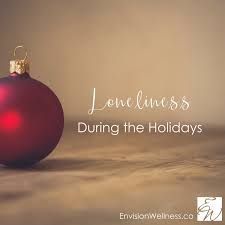What’s in Your Box?

What does that mean? It means what’s important to you. What do you want to take with you should you leave your home and move to an assisted living community? Assisted living apartments typically range from 500 to 900 square feet, so if you come from a home that is 2,000 square feet, you will be losing a significant amount of square footage.
What’s important to me may not be important to you; it differs for everyone. You’ll want to balance practical needs with personal comforts when thinking about what to bring. Here's a breakdown of what might be in your box and what to consider taking with you:
When preparing to move into an assisted living community, the "box" is a metaphor for the essentials or comforts you’re packing to make the space your own. Here’s what could go in that box:
- Personal Essentials:
- Clothing: Comfortable, easy-to-wear clothes, including shoes that are safe for walking (like non-slip footwear).
- Toiletries: Toothbrush, toothpaste, soap, shampoo, lotion, and other personal hygiene items.
- Medications: A well-organized container for daily meds (check with staff for any medication regulations).
- Comforting Personal Items:
- Photographs: Family pictures, old albums, or framed photos of pets can help create a homier feel.
- Favorite Books or Magazines: If you love to read, packing a few favorite books or magazines can be comforting.
- Blankets or Throw Pillows: Soft, cozy items that remind you of home.
- Technology:
- Cell phone or tablet: Stay in touch with family and friends. If needed, a simple phone with larger buttons might be helpful.
- Charger and headphones: Keep your devices powered up and ready for entertainment or communication.
- Entertainment & Hobbies:
- Crafts, puzzles, or knitting: Hobbies like knitting, crocheting, or painting can offer a good mental boost.
- Music: A playlist or a device with your favorite tunes. Maybe even a small portable speaker.
- Documents:
- Important papers: Health documents, insurance information, and personal identification should always be within easy reach.
- Safety Items:
- Walkers or canes: If you use mobility aids, don't forget these items.
- Glasses and Hearing Aids: Any vision or hearing accessories you rely on to help with daily life.
What would you take with you?
When moving into an assisted living community, you may not have the space for everything you own, so bringing only the most meaningful and necessary items is important. Here's a breakdown of what to take with you:
- Personal Care and Health Items:
- Your medications, medical devices (like CPAP machines), and other health-related essentials should come.
- Items like hearing aids, glasses, and dentures are crucial to have on hand.
- Don’t forget a first aid kit with basic items like band-aids, antiseptic wipes, and a thermometer.
- Bedding and Furniture:
- Sheets, blankets, and pillows that are soft and familiar.
- If allowed, take small, comfortable furniture like a favorite chair or nightstand.
- Decorative Touches:
- Personal touches such as a family photo frame, a small vase, or your favorite artwork can make a new space feel welcoming.
- Consider a small rug to help make the room feel warmer and more comfortable.
- Clothing:
- Comfortable clothing that suits the climate where you’ll be living.
- Slippers and non-slip shoes are very important for safety and comfort.
- Seasonal clothing: Depending on the time of year, pack sweaters, jackets, hats, or lighter clothes.
- Technology:
- Smartphone or tablet for keeping in touch with family and friends.
- A Kindle or e-reader could be a great option if you like to read but want to save space.
- Tangible Keepsakes:
- A small heirloom, a favorite book, or a memory box filled with meaningful trinkets can bring emotional comfort in a new place.
- Food & Kitchen Tools (if allowed):
- Some assisted living communities may allow you to have a few personal items for snacks, like a mini fridge or microwave in your room.
- Favorite snacks or special foods you enjoy might be comforting to have on hand.
Considerations for Your New Space
Each assisted living community has its own rules and space limitations, so it’s a good idea to ask what you can bring and what is already provided. Many communities offer furniture, housekeeping, and even activities, so your primary focus may be personalizing your space with items that truly bring you joy and comfort.
Ultimately, the most important things to take will help you feel settled, safe, and supported in this new chapter of your life.
What’s in your box for this kind of move? Are there any personal items you would want to make sure are packed?



